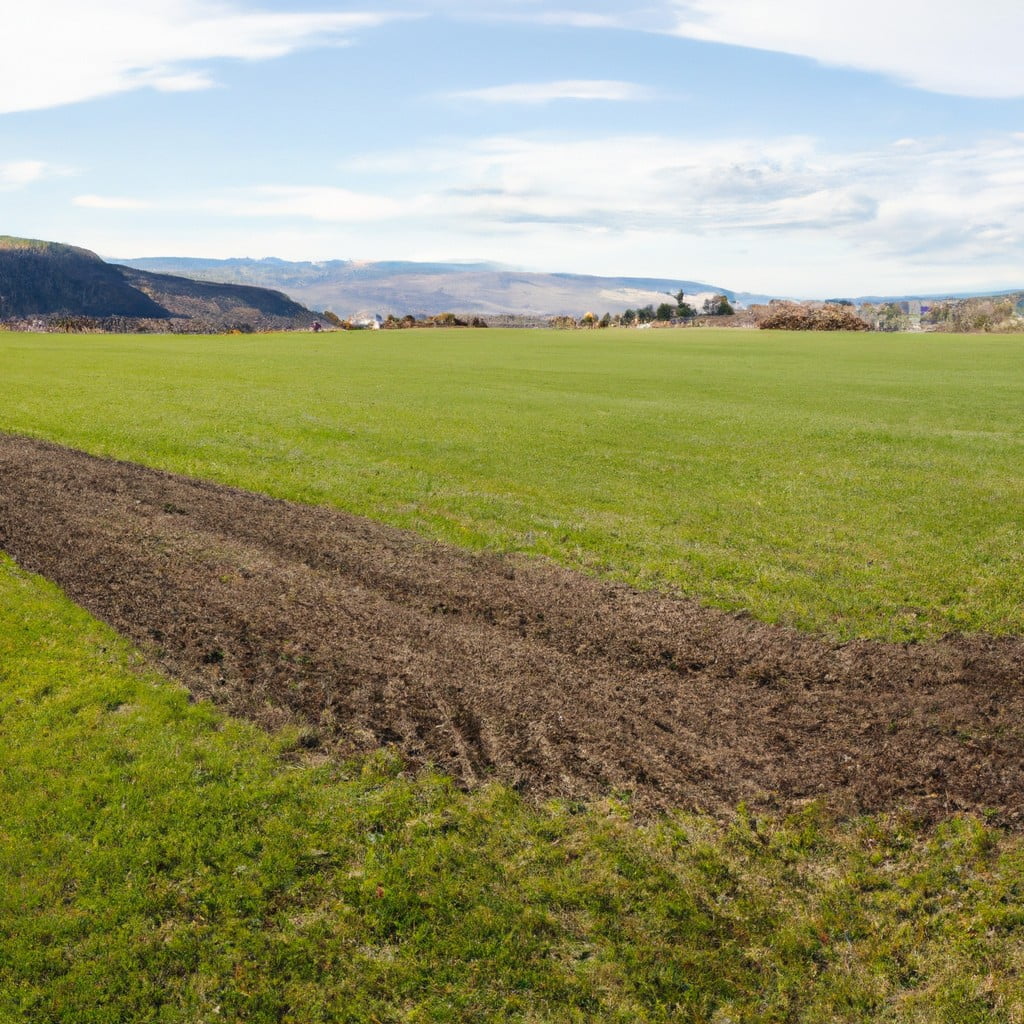Yes, regenerative farming works by replenishing the soil, boosting biodiversity, improving the water cycle, and reducing carbon emissions, while also delivering productive yields.
Regenerative farming, a holistic approach to agriculture, is not just a buzzword but a proven method that works. It’s an effective strategy that enhances soil health, promotes biodiversity, improves water cycles, and even combats climate change.
The principles of regenerative farming – minimal soil disturbance, crop diversity, cover cropping, and livestock integration – have been scientifically validated to rejuvenate the land while increasing productivity.
This article delves into the science and success stories behind regenerative farming, providing a comprehensive understanding of why and how it works. So, stay tuned if you’re interested in learning more about this transformative approach to agriculture.
Key takeaways:
- Regenerative farming replenishes soil, boosts biodiversity, improves water cycle, reduces carbon emissions.
- Key principles: minimize soil disruption, preserve permanent soil cover, encourage plant and crop diversity, integrate livestock.
- Regenerative farming benefits: improved soil health, increased crop yields, carbon sequestration, biodiversity, socio-economic development.
- Regenerative farming mitigates climate change and aids in adaptation to extreme weather.
- Transition to regenerative farming can be economically viable, with long-term profitability and market demand potential.
- ——————————————————————————————————————————————–
Look Inside:
Understanding Regenerative Farming

Rooted in the observation of natural ecosystems, regenerative farming extends beyond sustainable practices. It does not merely strive to minimize harm to the environment but also aims to restore and improve it. This approach incorporates techniques such as crop rotation, cover cropping, and agroforestry, aiming to mimic the natural world in its nurturing of biodiversity and healthy soils.
By actively enhancing soil fertility, it supports the growth of nutritious crops and robust agricultural systems that are resilient to pests, diseases, and extreme weather conditions. Thus, the very essence of regenerative farming aligns with both ecological balance and agricultural productivity.
Key Principles of Regenerative Farming
Regenerative farming embraces a series of practices aimed at enriching soil fertility, nurturing plant health and strengthening ecosystem resilience. Here are the core tenets:
- Minimize Soil Disruption: Soil is viewed as a living entity requiring delicate handling. Limiting mechanical disruption preserves the soil structure, promoting plant growth and inhibiting erosion.
- Preserve Permanent Soil Cover: This strategy includes cover cropping and mulching, which protect the soil from erosion, suppress weeds, enhance soil moisture, and provide nutrient-rich organic matter.
- Encourage Plant and Crop Diversity: Variety supports a healthy agroecosystem, which in turn improves resilience to diseases, pest outbreaks, and weather extremes.
- Integrate Livestock: Livestock rotation naturally fertilizes the land and promotes soil biodiversity. Their grazing behavior facilitates the breakdown of organic matter, enhancing soil fertility.
These guidelines serve to restore the soil’s organic carbon content, amplify its water retention capabilities, and fuel a vibrant ecosystem teeming with beneficial microorganisms.
Regenerative Farming Vs Conventional Farming
Conventional agriculture often relies on large-scale monocropping, which depletes soil nutrients, requires significant pesticide and synthetic fertilizer use, and compromises biodiversity.
Regenerative methods, however, focus on diversity and constant cover crops to nurture the soil microbiome.
Rather than heavily tilling the soil, which leads to erosion and carbon release, regenerative farming employs minimal tillage.
The integration of livestock into the farming system also offers natural fertilization, pest control, and increased production efficiency.
Hence, while conventional farming can degrade the ecosystem, regenerative agriculture seeks to restore and improve it, demonstrating an important shift in farming strategies for a sustainable future.
Benefits of Regenerative Agriculture
Regenerative agriculture offers myriad benefits for both the environment and farmers. By improving soil health through natural methods such as cover cropping and composting, farmers can increase their land’s fertility and resilience, leading to better crop yields and a reduced dependence on synthetic fertilizers and pesticides.
In addition, healthier soils have a higher capacity to capture and store carbon dioxide from the atmosphere, helping to offset greenhouse gas emissions and mitigate climate change. Likewise, by promoting biodiversity, regenerative agriculture encourages a balanced ecosystem that’s more resilient to pests, diseases, and extreme weather conditions.
On the socio-economic front, regenerative farming can help communities by creating jobs, providing food security, and promoting sustainable rural development. This is owing to the labor-intensive nature of regenerative practices and the need for locally adapted solutions.
Finally, consumers are increasingly gravitating towards products that are sustainably produced, leading to a demand surge for products derived from regenerative farming. This transformation has the potential to shape the future of food markets, opening up new opportunities for farmers.
Environmental Impact of Regenerative Farming
Transitioning to regenerative farming practices carries significant environmental benefits. Firstly, by increasing soil organic matter through the use of cover crops and compost, the soil’s capacity to store carbon improves, sequestering it from the atmosphere and mitigating climate change.
Secondly, diverse cropping systems boost local biodiversity, creating a resilient ecosystem teeming with pollinators, predators, and other beneficial organisms. This diversity reduces reliance on chemical pesticides, consequently preventing water and soil pollution.
Moreover, regenerative farming enhances the water cycle. Healthy soils absorb and retain more water, reducing runoff and erosion while ensuring crops have access to moisture even in times of drought.
Lastly, through livestock integration, there’s a reduction in production of methane – a potent greenhouse gas – as grazed pastures sequester more carbon, counterbalancing emissions. Thus, regenerative farming represents a sustainable approach to farming that actively conserves our environment.
Role of Regenerative Farming in Climate Change
Regenerative farming poses a viable solution for climate change by actively removing carbon dioxide from the atmosphere and sequestering it in the soil. This biosequestration process not only improves soil fertility, but also reduces greenhouse gas concentration.
According to research, converting just 5% of U.S cropland to regenerative practices could sequester the equivalent of 50% of annual U.S. greenhouse gas emissions.
Additionally, by improving resilience against extreme climatic conditions, regenerative farming aids farms in adapting to climate change.
Economics of Regenerative Farming
Switching from conventional to regenerative methods can be economically viable. Due to the significant reduction in input costs such as synthetic fertilizers and pesticides, over time, the profitability of regenerative farms often surpasses that of conventional farms.
Moreover, healthier soil leads to higher yield resilience in the face of erratic weather conditions, mitigating financial risks associated with crop failures. Additionally, growing market demand for sustainably-grown products can further boost profitability.
However, the economic transition is not without challenges. Initial implementation costs, lack of understanding about regenerative practices, and delayed profitability are common barriers. Irrespective of these hurdles, the long-term benefits combined with innovative financial models and supportive policies can make regenerative farming a compelling economic choice for farmers.
The Challenges of Implementing Regenerative Farming
Transitioning from traditional farming practices to regenerative methods can be quite challenging. There’s a significant learning curve, requiring farmers to understand and implement new practices effectively. In the initial stages, farmers might face lower production quantities, making it a risky endeavor for those operating on thin margins.
Securing adequate funding for implementing regenerative practices is another common challenge. Policy and financial incentives often lean towards conventional, high-input farming rather than supporting innovative, sustainable approaches.
Furthermore, measuring the improvements in soil health and biodiversity may take several years, testing the patience and resolve of farmers making the shift. Environmentally, it could appear as though nothing is changing in the short-term, while expenses may seem to increase. These challenges necessitate resilience, long-term financial planning, and dexterous management skills for any farmer contemplating the switch to regenerative farming.
Case Studies: Success Stories of Regenerative Farming
In the Midwestern plains of the United States, Allen Williams, a sixth-generation farmer, transformed his barren, degraded lands into lush, fertile fields through regenerative farming methods. Diversification of crops, planned grazing practices, and enhancing soil health notably increased both farm output and profitability.
Meanwhile in the South Australian outback, Colin Seis took a different route by innovating ‘pasture cropping’. Integrating native grasses with traditional cereal crops, he achieved lower input costs, increased yield, and more resilient fields.
In Brazil, Ernest Gotsch’s syntropic farming model has turned deforested, arid lands into productive agroforestry systems. His agricultural model uses succession planning and imitates natural ecosystems, resulting in productive systems that maintain their own fertility levels.
These success stories illustrate the tremendous potential and scalability of regenerative farming practices. They bring to light the possibilities that await our global food systems when we adopt a more sustainable and restorative agricultural approach.
Future of Regenerative Farming: Current Trends and Predictions
Advancements in technology and increases in consumer demand for sustainable practices continue to drive the upward trajectory of regenerative farming. Current trends show a growing number of farmers adopting these practices, facilitated by the innovations in precision agriculture technology. These tools aid farmers in monitoring soil health, optimizing water usage, and maintaining balanced ecosystems.
Predictions for the future see wider adoption of regenerative farming, stimulated by both policy support and market incentives. As the benefits of regenerative farming become more evident, a holistic approach to agriculture might become the norm rather than the exception. It is necessary for policy initiatives to promote this shift, providing support for farmers transitioning to these practices.
While the aim is a global adoption of regenerative farming, it’s crucial to understand that each farm is unique. Practices must be adapted to local conditions and ecosystems for optimum results. Therefore, education and ongoing research into region-specific regenerative practices are crucial components in this evolving journey towards a more sustainable future.
Regenerative farming is not only a trend but a growing necessity, creating a more sustainable, resilient, and beneficial food system for all – a win for farmers, consumers, and the environment.
FAQ
Does regenerative farming really work?
Regenerative farming indeed works as it results in fertile soil that produces high-quality, nutrient-rich food, while enhancing the land’s health, which further contributes to thriving farms, communities, and economies.
Is regenerative farming profitable?
Yes, regenerative farming is profitable, with a study indicating that farms using such practices tend to be 78% more profitable than those following conventional methods due to reduced input costs and the development of end markets.
Why is regenerative agriculture not sustainable?
Regenerative agriculture is not sustainable due to its inability to scale effectively on limited land resources and failure to address animal welfare concerns.
What are the potential environmental impacts of regenerative farming?
Regenerative farming’s potential environmental impacts include significantly reducing carbon emissions, improving soil health, increasing biodiversity, and enhancing ecosystem resilience.
How does regenerative agriculture contribute to biodiversity?
Regenerative agriculture enhances biodiversity by implementing farming practices that preserve and restore ecosystems, improving soil health, supporting a variety of plants and animals, and increasing resilience to climate change.
Are there any potential disadvantages to adopting regenerative farming practices?
Potential disadvantages of adopting regenerative farming practices can include high initial costs, the necessity for specialized training, and a temporary drop in productivity as ecosystems undergo restoration.




